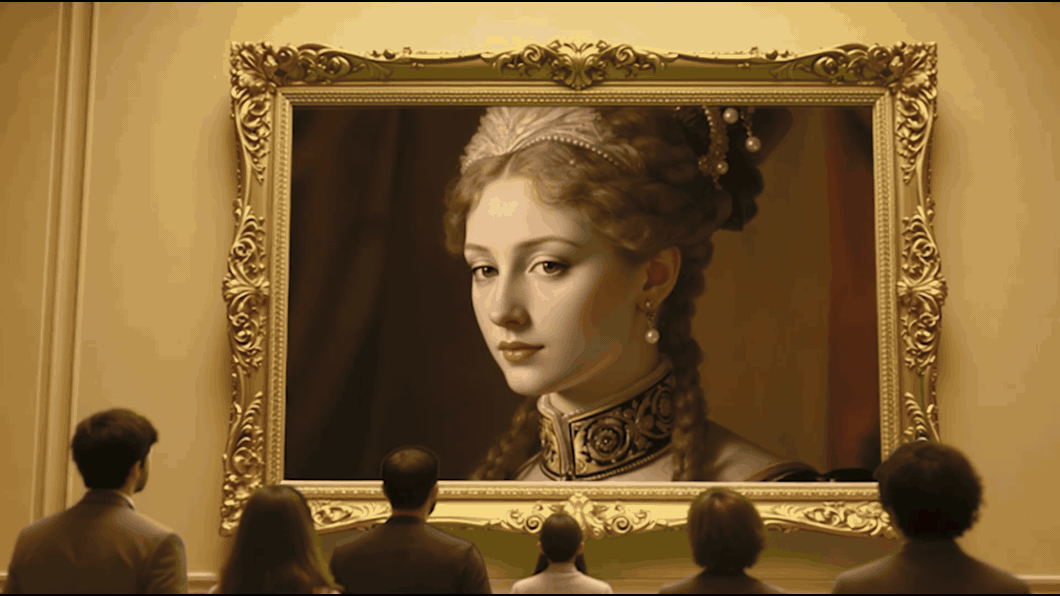Fujifilm GFX 100 II vs GFX 100
The original GFX 100 is still on sale and still costs more. Our Fujifilm GFX 100 II vs GFX 100 guide tries to figure out why
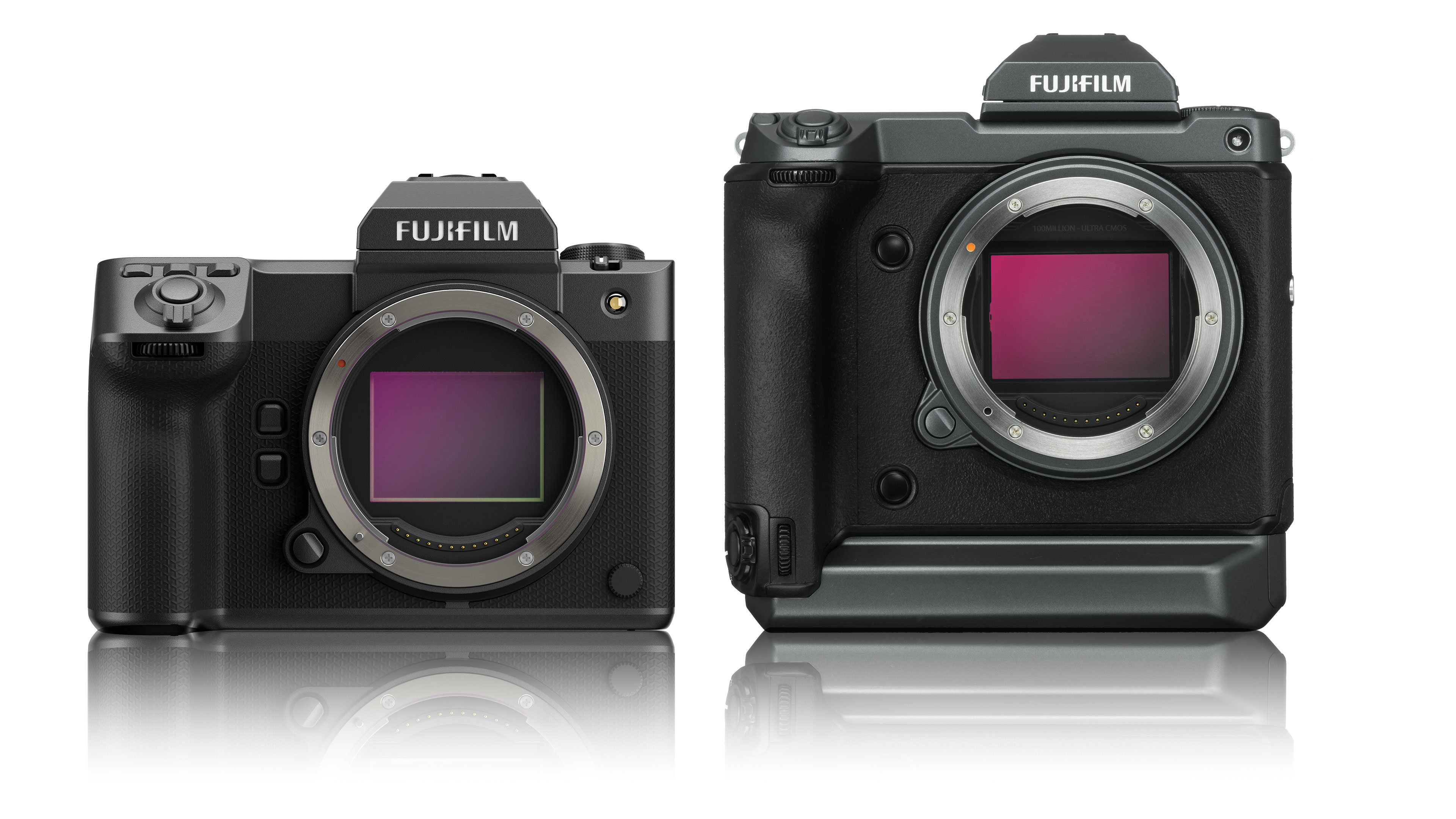
The original GFX 100 is not some ancient dinosaur that has inexplicably survived through the eons. In fact, it was launched as recently as 2019 and, judged in isolation, its specs still seem strong even today. But it has hardly budged from its original $10,000/£10,000 asking price, even though its replacement, the new GFX 100 II, is $2,500/£3,000 cheaper.
Having said that, it's worth looking out for cheap GFX 100 deals now that the GFX 100 II is out (though this didn't happen when the GFX 100S arrived), or even checking out the older camera on the used market where prices are dramatically lower.
Let’s be clear. The Fujifilm GFX 100 II is not simply a cheapened, cut-down version of the GFX 100 (even the 2021 GFX 100S was better than that). It’s a camera that’s better, faster, slicker and cheaper to buy, and with cinematography features that make the once-impressive GFX 100’s 4K capture look positively prehistoric.
It is without a doubt going to be one of the best medium format cameras you can buy, one of the best Fujifilm cameras of all and is going to be knocking on the door of the best cinema cameras. It’s hard to overstate what Fujifilm has achieved with the GFX 100 II.
So how far has it come since the original GFX 100, why is the GFX 100 still on sale at its original price, and does Fujifilm’s original 100MP monster have anything at all to commend it when set against its brand new replacement?
We can’t answer that middle question, but we can answer the other two.
Fujifilm GFX 100 II vs GFX 100 in 2025
Why you can trust Digital Camera World
1. Sensor
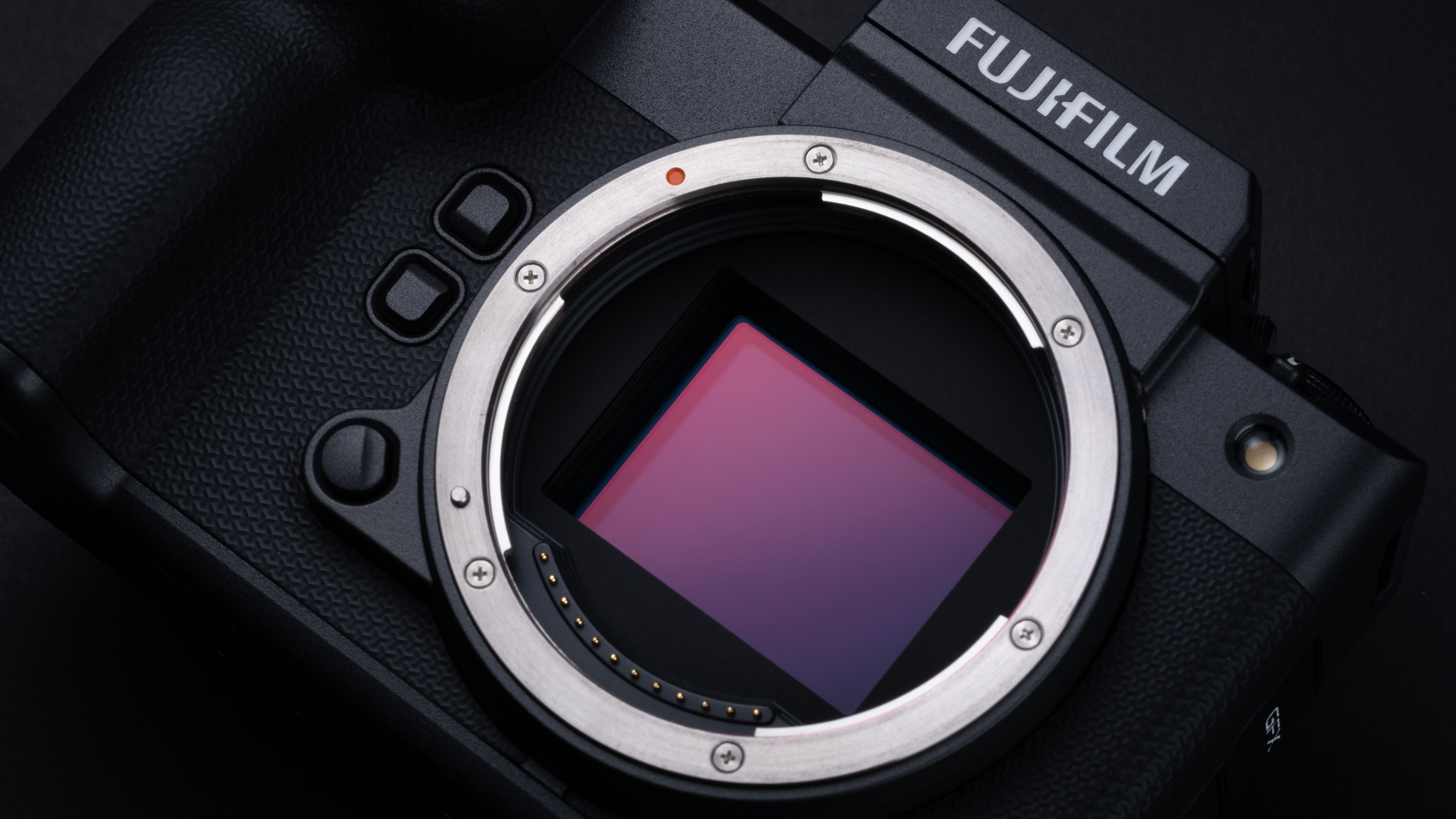
• Fujifilm GFX 100 II: Medium format 43.8mm × 32.9mm 102MP CMOS II HS, X-Processor 5, 400MP Pixel Shift Multi-Shot
• Fujifilm GFX 100: Medium format 43.8mm x 32.9mm, 102MP, X-Processor 4, 400MP Pixel Shift Multi-Shot
The sensor is typically the first point of comparison between cameras, and here there’s no difference in either the physical size or the outright resolution. Both cameras have a 43.8 x 32.9mm medium format sensor with 102 million pixels. They both offer Fujifilm's 400MP Pixel Shift Multi-Shot mode too, the GFX 100 via a later firmware update.
However, the GFX 100 II has a 2x faster readout speed and benefits from Fujifilm’s newer X-Processor 5, versus X-Processor 4 in the original GFX 100. This has implications for video capture and burst shooting, as we’ll see. This new sensor also has redesigned microlenses for better coverage, image quality and AF accuracy in the corners of the image.
2. ISO range
• Fujifilm GFX 100 II: ISO 80-12,800, exp 40-102,400, Extended to ISO 80 with improved pixel structure
• Fujifilm GFX 100: ISO 100-12,800, exp 50-25,600
The GFX 100 II might have an improved sensor and processor, but there’s only a small change to the standard ISO range, which starts at ISO 80 rather than the ISO 100 of the GFX 100. The maximum standard ISO rating is the same at ISO 12,800, though the GFX 100 II does have a 2-stop higher maximum of ISO 102,400 in expanded mode. In this mode it can also go down to ISO 40, rather than the ISO 50 minimum of the GFX 100.
3. Autofocus
• Fujifilm GFX 100 II: Hybrid 117/425 area phase/contrast AF, AI subject detection AF, human faces and eyes, animals, birds, cars, motorcycles, bicycles, airplanes, trains
• Fujifilm GFX 100: Hybrid 117/425 area phase/contrast AF, Face/eye detect
Superficially, the autofocus systems might look similar too. Both cameras offer a hybrid 117/425-area hybrid phase/contrast AF system (the actual number of AF points is much higher). However, the GFX 100 II adds AI-powered subject recognition and tracking and can detect not just faces and eyes, as the original GFX 100 could, but animals, birds, cars, motorcycles, bicycles, airplanes and trains too. It also offers strong AF customization options, an updated AF tracking algorithm and an interesting Focus MAP assist display during manual focus.
4. Stabilization
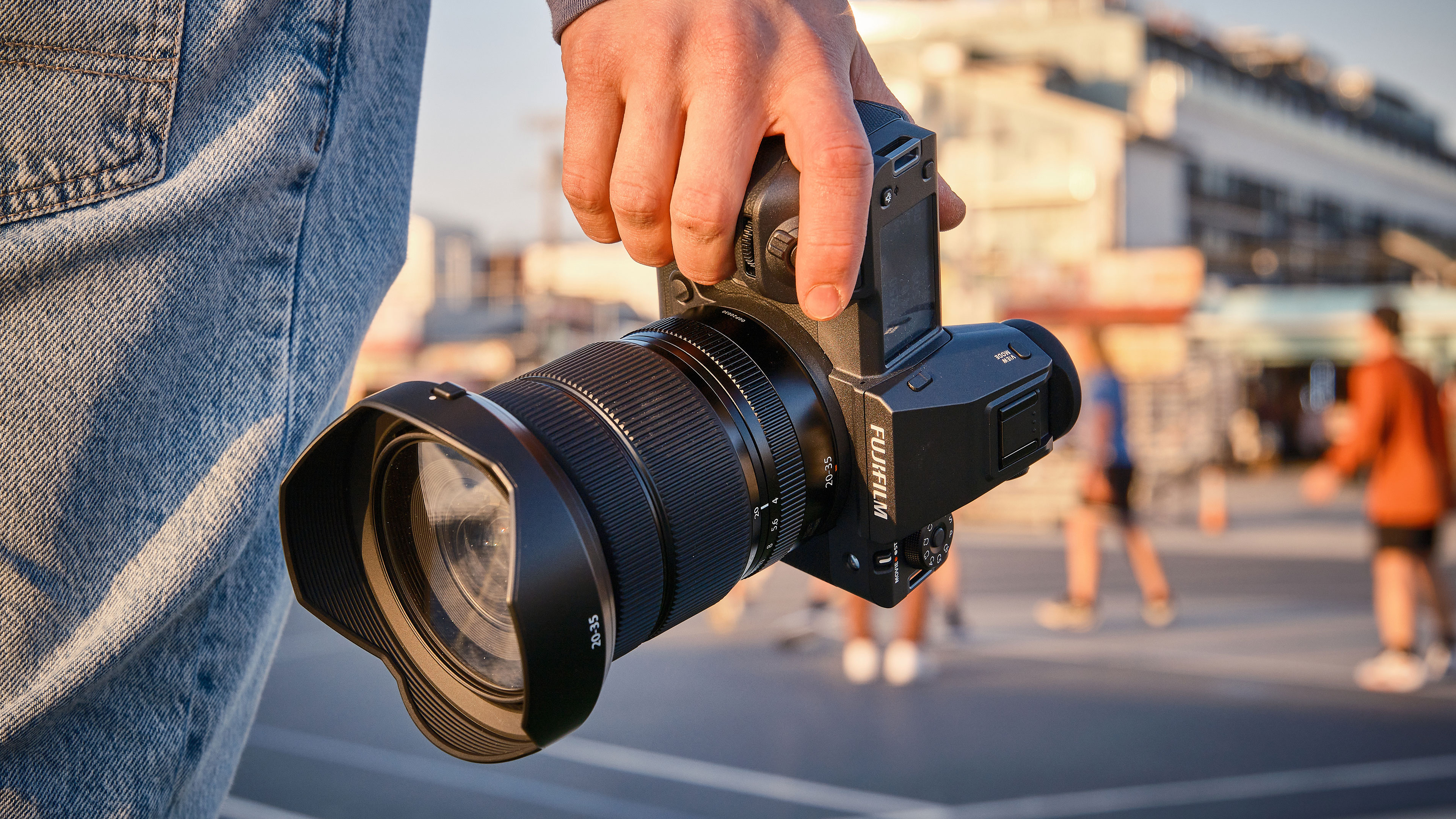
• Fujifilm GFX 100 II: 5-axis IBIS, 8-stops
• Fujifilm GFX 100: 5-axis IBIS, 5.5 stops
We were impressed by the 5.5-stop IBIS in the original GFX 100, but the GFX 100 II takes this further, uprating the compensation to 8 stops. That’s going to be an advantage both to stills photographers shooting handheld and to videographers too, though the GFX 100 II is a long way from a vlogging camera, and is perhaps more likely to be used on a stabilizing rig or a tripod.
5. Video
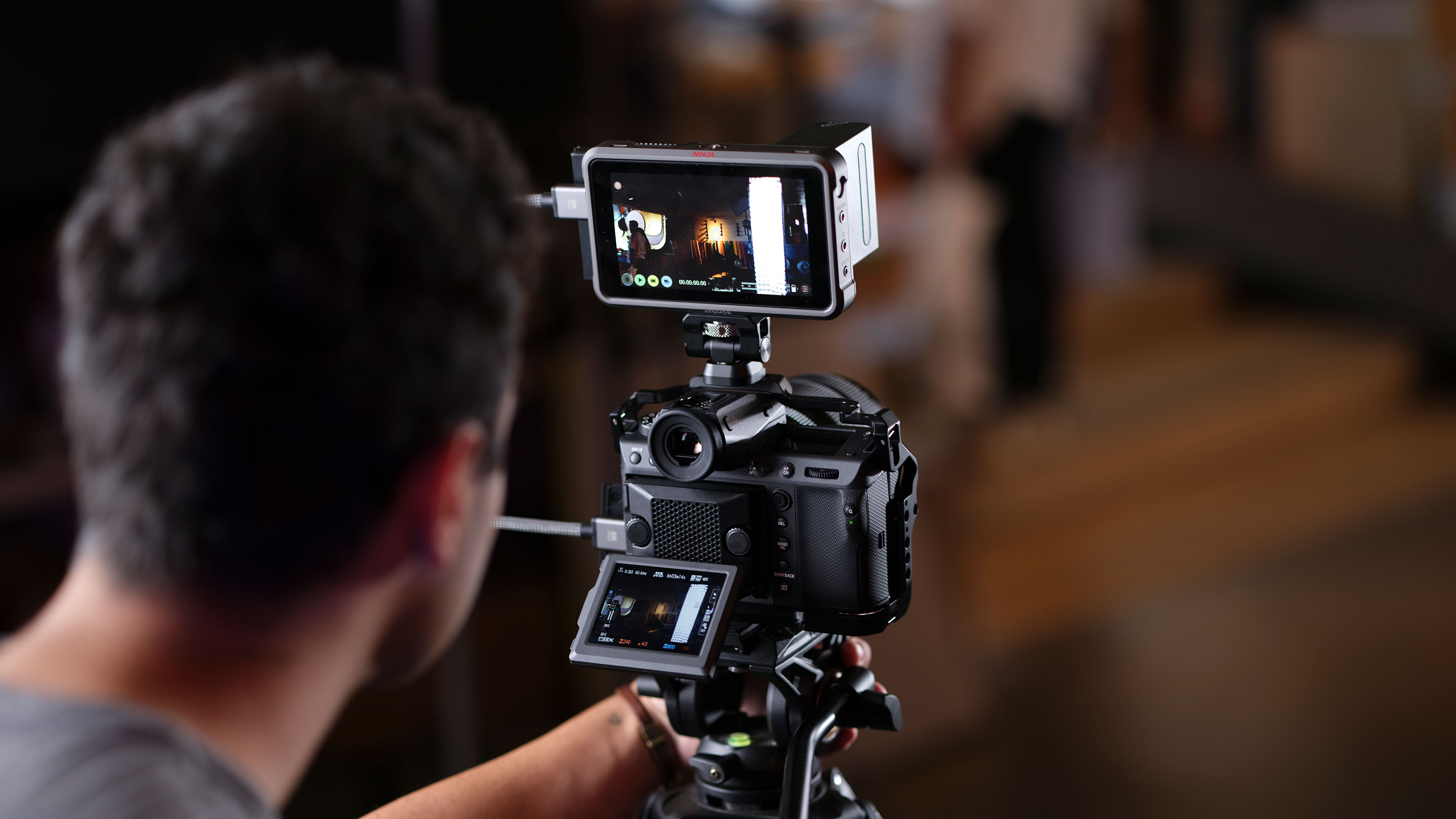
• Fujifilm GFX 100 II: 4K/60p, 8K/30p, FHD/120p, 4:2:2 10-bit Internal Recording, F-Log2, 12-bit Apple ProRes RAW up to 8K 30p to Atomos over HDMI, All Intra, Long GOP
• Fujifilm GFX 100: 4K/30p, 10-bit 4:2:2, F-Log, Apple ProRes RAW over HDMI, All Intra, Long GOP
It’s in the video specifications that the GFX 100 II streaks ahead, bringing a massive upgrade for filmmakers. This is a pattern we’re seeing a lot in new cameras, where the stills photography specs only show a modest evolution, but video capabilities take a giant leap forward.
They certainly do here. The GFX 100 II’s maximum video resolution jumps from 4K right up to 8K, and for 4K shooting it now offers a maximum of 60fps, and 120fps for full HD. However, the multitude of new video formats, resolutions and frame rates does bring a range of different crop factors from 1.0 to 1.51x.
Like the original GFX 100, the GFX 100 II can record 4:2:2 10-bit video internally and ProRes RAW to compatible Atomos devices over HDRM (it does have a full size Type A HDMI port, though, rather than the smaller Type D port in the older camera).
And there’s more. The GFX 100 II can also record to SSDs via its USB Type-C port, it comes with Fujifilm’s latest F-Log2 profile for 14+ stops of dynamic range, it offers direct Camera to Cloud compatibility with the cloud-based Frame.io service and it can be fitted with an optional FAN-001 Cooling Fan. It does seem to represent a big step up in Fujifilm’s ambitions for this camera as a series filmmaking and cinema tool.
6. Continuous shooting
• Fujifilm GFX 100 II: 8fps mechanical shutter, 8.7fps electronic, 1000+ JPEG, 260-1000+ raw
• Fujifilm GFX 100: 5fps mechanical shutter, 2.9fps electronic, 41 JPEG, 15 raw
The original GFX 100 could plod along at 5fps in continuous shooting mode, but its modest buffer capacity meant it couldn’t keep it up for long. The newer sensor, faster readout and more powerful processor of the GFX 100 II have made a useful difference to the maximum frame rate, now 8fps with the mechanical shutter, 8.7fps with the electronic shutter and a 5.3fps blackout-free mode.
Perhaps the biggest change, though, is to the buffer capacity. The GFX 100 II can sustain its burst speeds for 1000+ JPEGs and 250-1000+ raw files, depending on the raw compression setting and shooting mode chosen. This, in combination with its improved AF subject recognition and tracking capabilities, makes the GFX 100 II much better suited to capturing action.
7. EVF
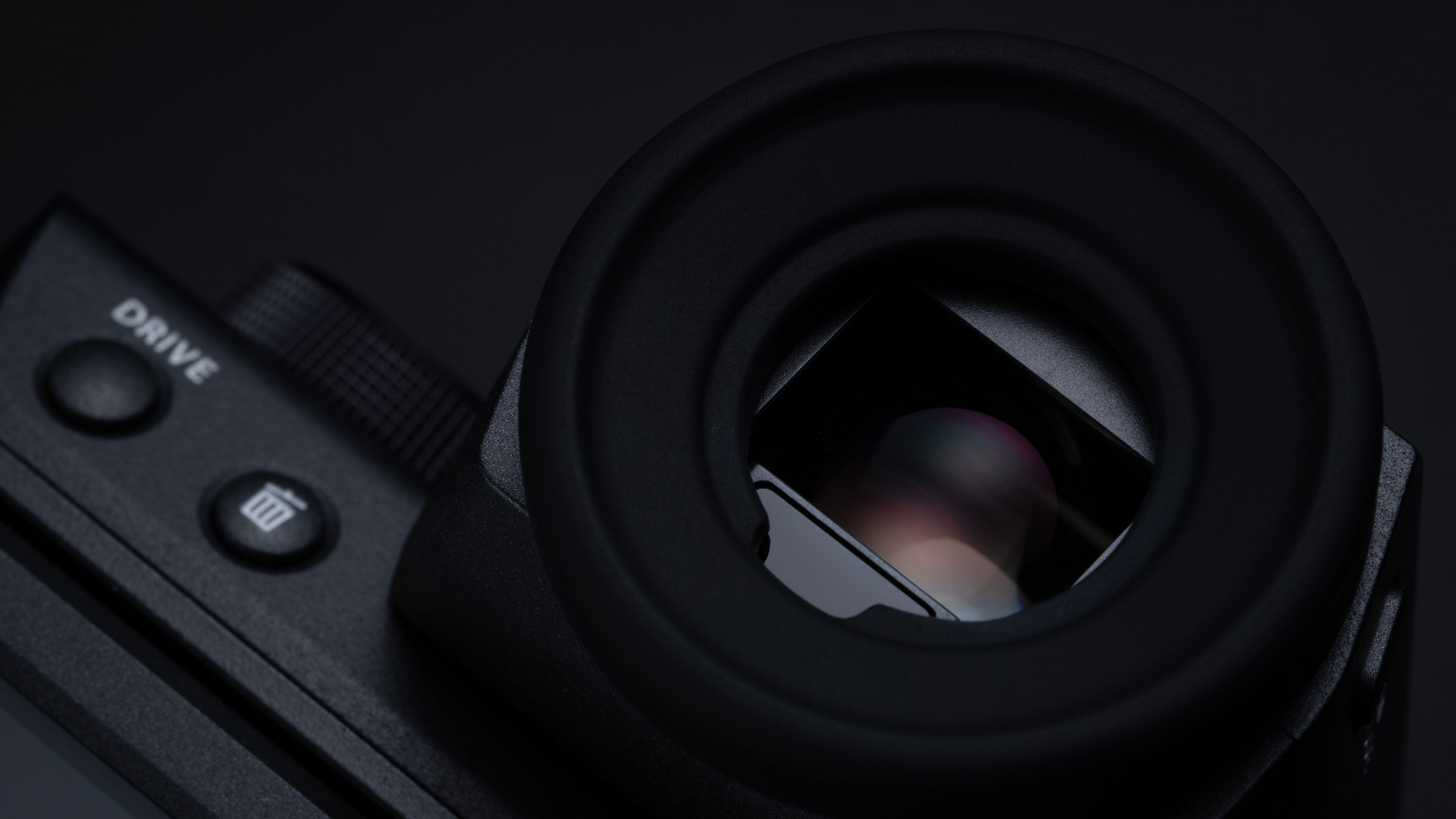
• Fujifilm GFX 100 II: 0.64-in, 9.44m dot, 1.0x magnification, 120fps frame rate boost for fast moving subjects
• Fujifilm GFX 100: 0.5-in 5.76m dots, 0.86x magnification, up to 85fps in boost mode
The electronic viewfinder in the GFX 100 was pretty good, but the EVF in the new GFX 100 II is better in every way. It uses a larger 0.64-inch panel, it has a much higher resolution of 9.44 million dots versus 5.76 million for the GFX 100, and it can operate at up to 120fps versus the maximum 85fps of the GFX 100 – and it has a blackout-free mode for burst shooting.
8. LCD
• Fujifilm GFX 100 II: 3.2-inch 2.36m dot three-way tilting touchscreen
• Fujifilm GFX 100: 3.2-inch 2.36m dot tilting touchscreen
The only difference in the screens on the back of these cameras is that the GFX 100 II adds a three-way tilting mechanism where the GFX 100 offers a simple tilt. Otherwise, it’s a pretty generous 3.2-inch display size by today’s standards with an equally generous 2.36 million dot resolution.
9. Connectivity
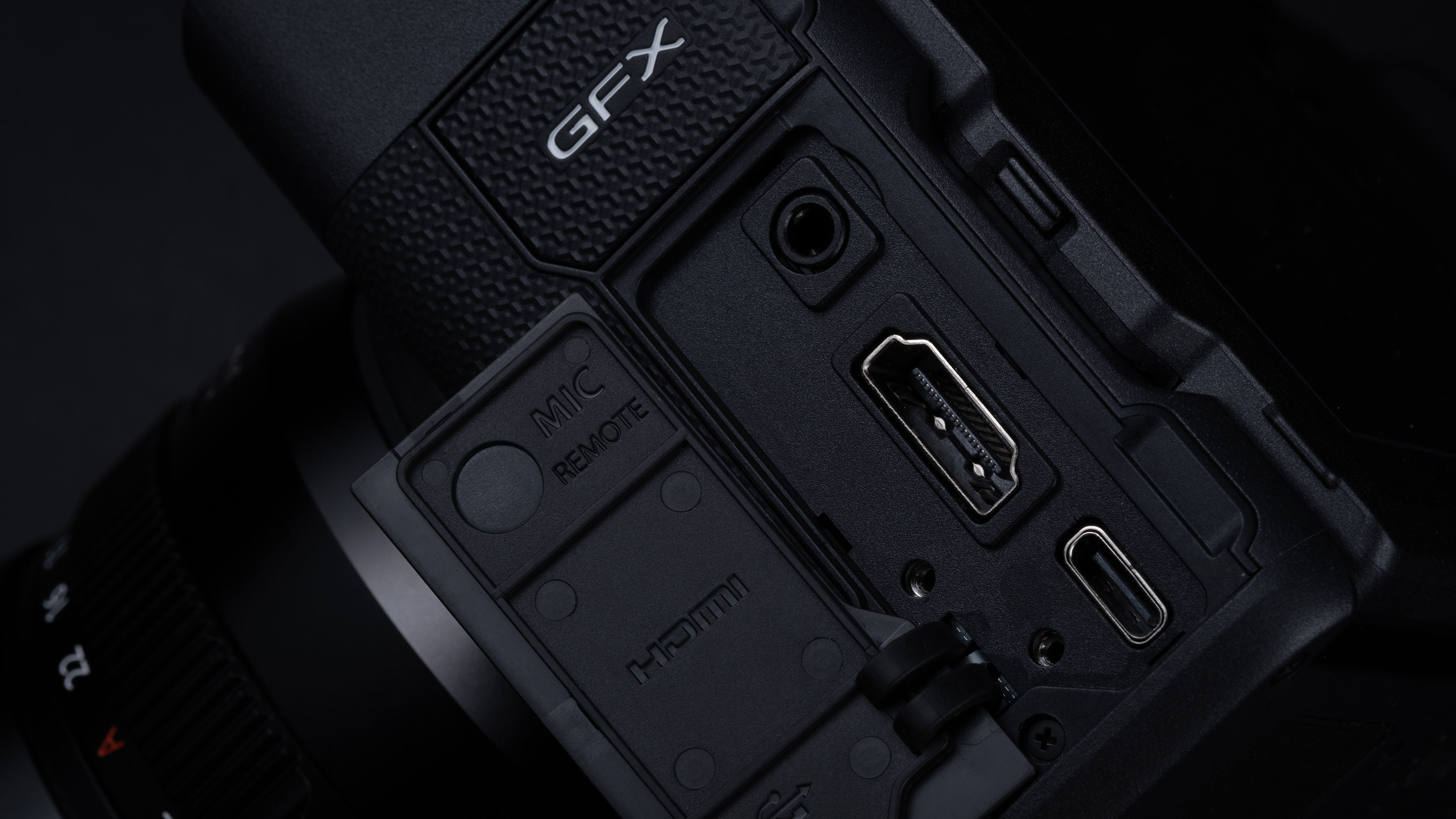
• Fujifilm GFX 100 II: USB Type-C, Ethernet, HDMI Type A, mic, headphone, Wi-Fi, Bluetooth
• Fujifilm GFX 100: USB Type-C, HDMI Type D, mic, headphone, Wi-Fi, Bluetooth
The key connectivity differences are that the GFX 100 II now comes with an Ethernet port for direct LAN connection, and the small Type D HDMI port on the original camera has been replaced with a proper full size HDMI Type A port, which offers a much more physically secure connection.
10. Storage
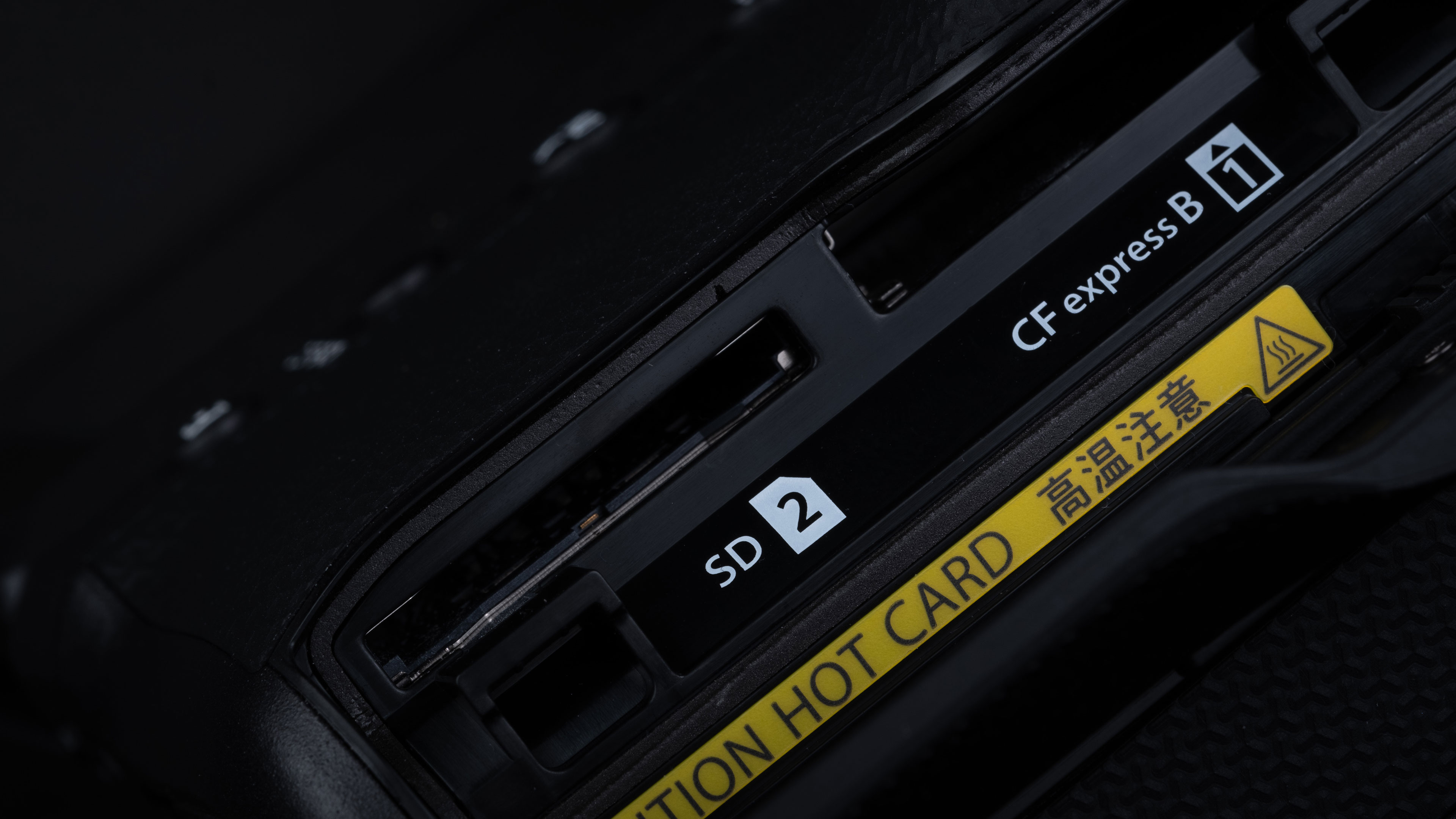
• Fujifilm GFX 100 II: 1x SD UHS II, 1x CFexpress Type B, 10-bit HEIF support
• Fujifilm GFX 100: 2x SD UHS II
The GFX 100 came with two SD UHS II card slots, and the GFX 100 II also comes with two card slots, but one of these has now been given over to the newer and faster CFexpress type B format. It does mean that it’s no longer possible to used paired memory cards for real-time backup, but the speed of CFexpress type B has opened up the GFX 100 II’s potential for high-end video capture and faster/longer burst shooting.
11. Battery
• Fujifilm GFX 100 II: NP-W235, 540 shots
• Fujifilm GFX 100: NP-T125 x2, 800 shots
As we’ll see in the next section, the GFX 100 II is a smaller, more compact camera, and it has a single NP-W235 lithium ion cell rather than the two NP-T125 batteries in the GFX 100. This does mean the battery life is reduced, but even with its single battery, the GFX 100 II can capture up to 540 shots on a single charge. That’s pretty good by mirrorless camera standards, though it doesn’t match the original GFX 100’s 800-shot capacity.
12. Size
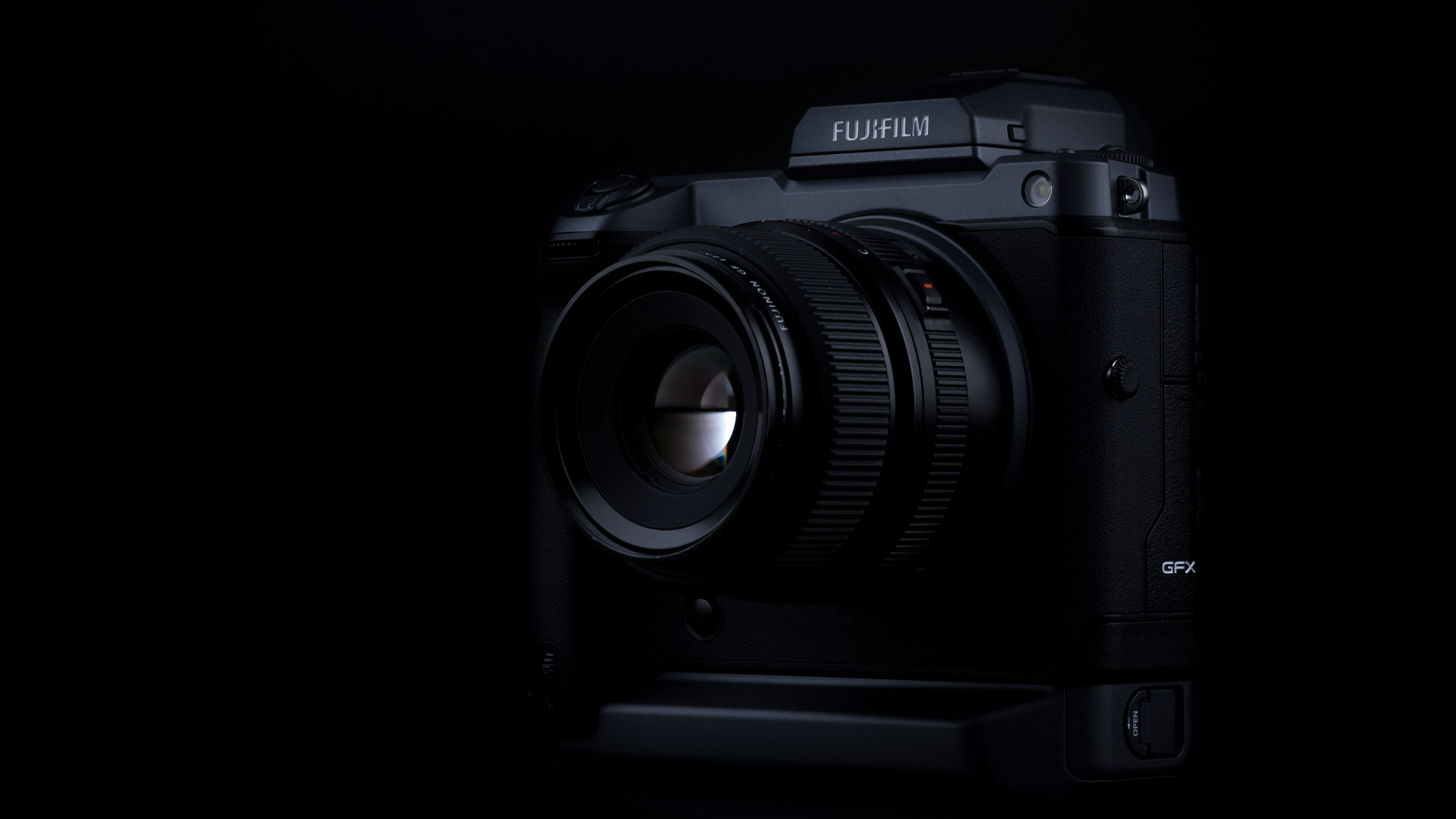
• Fujifilm GFX 100 II: 152.4 x 117.4mm x 98.6mm, 948g
• Fujifilm GFX 100: 156.2 × 163.6 × 102.9mm, 1,400g, integrated grip with horizontal/vertical controls, additional rear info screen
There’s one key difference between the GFX 100 and GFX 100 II that’s obvious straight away. The integrated grip of the older camera makes it physically much taller and also a good deal heavier. That might seem to place it at a clear disadvantage, but one of the reasons Fujifilm has kept this camera on, even after the launch of the GFX 100S, is its professional/studio form factor. The integrated grip doesn’t just hold two batteries, it also offers vertical controls for extended portrait format shooting. There’s also a subsidiary info display on the back of the camera above the ‘grip’ section.
Many pros will prefer this integrated grip design, and to get the same effect with the GFX 100 II means buying a separate grip (the new VG-GFX100II). This might explain, at least in part, why the GFX 100 is still being offered.
Fujifilm GFX 100 II vs GFX 100: conclusions

• Fujifilm GFX 100 II: $7,499 / £6,999
• Fujifilm GFX 100: $9,999 / £9,999
These are the current main retailer prices at the time of writing, and the GFX 100 is still at its original price point – though things can change overnight, so look out for special GFX 100 deals.
Given current main dealer prices, though, it's hard to make any kind of a case for the Fujifilm GFX 100 in 2023. What’s even harder to take in is that this is all very recent history. The GFX 100 was launched in 2019, when the idea of a remotely affordable medium format camera was new, and a 100MP sensor was the stuff of science fiction. On top of that, it was a medium format camera with modern phase detect AF, 4K video and in-body stabilization, for heaven’s sake. Extraordinary.
But then two years later, Fujifilm practically pulled the rug out from under its own flagship camera with the GFX 100S, a much lighter and more wieldy version at little more than half the price. And now, two years further down the line again, the GFX 100 II does it again, offering better performance in every respect, a huge leap in video capabilities and still at a much lower price.
If the GFX 100 II (and GFX 100S) didn’t exist, even today we would say that the original GFX 100 is a remarkable camera. But the GFX 100 II does exist and, unless you set huge store by the GFX 100’s bigger form factor, the GFX 100 II is a vastly better camera at a far lower price.
So why is the GFX 100 still around, and why hasn’t the price come down? Maybe Fujifilm keeps it on to make the GFX 100 II look even better value. The fact is, though, that buying or even considering the original GFX 100 makes little sense today.
HOWEVER. If you already have a GFX 100, you haven’t bought a pup. You bought it for what it could do and it probably still does it extremely well today. It has an integrated grip design that the GFX 100 II does not and, unless you need the enhanced filmmaking capabilities of the GFX 100 II, the original GFX 100 is still an extremely competent high-quality medium format camera with few direct rivals.
And even if we don't see any dramatic price reductions on new GFX 100 units, do check out the used market, where you can get this camera at great prices. Remember, the GFX 100 is still a very powerful and very current camera in technological terms.
Get the Digital Camera World Newsletter
The best camera deals, reviews, product advice, and unmissable photography news, direct to your inbox!

Rod is an independent photography journalist and editor, and a long-standing Digital Camera World contributor, having previously worked as DCW's Group Reviews editor. Before that he has been technique editor on N-Photo, Head of Testing for the photography division and Camera Channel editor on TechRadar, as well as contributing to many other publications. He has been writing about photography technique, photo editing and digital cameras since they first appeared, and before that began his career writing about film photography. He has used and reviewed practically every interchangeable lens camera launched in the past 20 years, from entry-level DSLRs to medium format cameras, together with lenses, tripods, gimbals, light meters, camera bags and more. Rod has his own camera gear blog at fotovolo.com but also writes about photo-editing applications and techniques at lifeafterphotoshop.com
